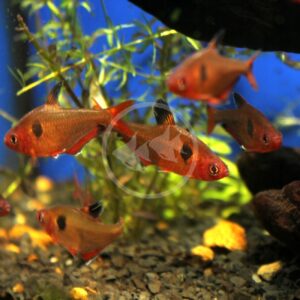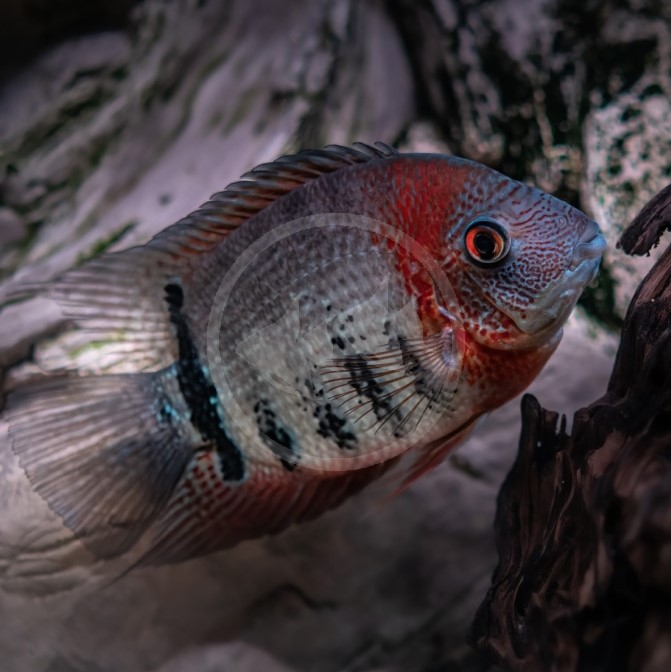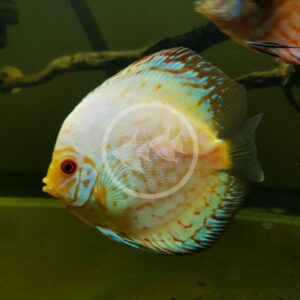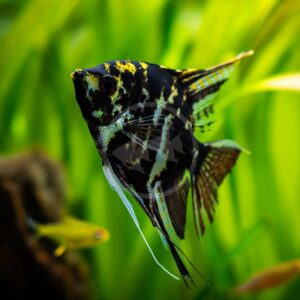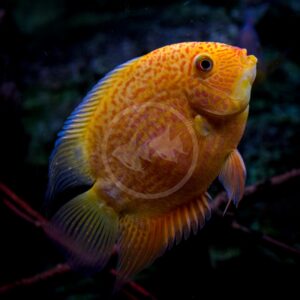
CICHLID – SEVERUM RED SHOULDER / ROTKEIL
Heros sp. “rotkeil”
$39.99 – $79.99
The Red Shoulder Severum, also referred to as the Rotkeil Severum, are widespread throughout much of South America’s main Amazonian channel in densely rooted, slow moving river waters. Many Red Shoulder severum available within the aquarium trade are produced through commerical fisheries, however. A relatively hardy and popular species, hobbyists should take into account the large adult size and somewhat long lifespan [approximately 10 years] of a severum before considering one for their aquarium. For its large size however, severum are a relatively non-aggressive cichlid so long as a pair is not breeding, or it is not kept with small fishes that can become a meal. Sexual dimorphism between males and females is not always clear; males will sometimes exhibit larger dorsal and anal fins, have markings on the gill plates and they could develop a nuchal hump on the head. Red Shoulder severum are typically tan-yellow in color with a green-blue speckled pattern and hue in its face with a rich red shoulder band as adults, but this coloration can expand across other parts of the body; there is considerable variation among color intensity and patterning of individual severums. Socializing severums is important to help prevent aggressive behavior as they mature if kept singly; small groups of 4 or more individuals will achieve this desired social structure. An adult severum can reach a size of approximately 12″ in the wild, but between 8″ and 10″ is typically seen in the home aquarium.
Care Level: Easy
Temperament: Semi-Aggressive
Live Plant Safe: No
General Description: The Red Shoulder Severum, also referred to as the Rotkeil Severum, are widespread throughout much of South America’s main Amazonian channel in densely rooted, slow moving river waters. Many Red Shoulder severum available within the aquarium trade are produced through commerical fisheries, however. A relatively hardy and popular species, hobbyists should take into account the large adult size and somewhat long lifespan [approximately 10 years] of a severum before considering one for their aquarium. For its large size however, severum are a relatively non-aggressive cichlid so long as a pair is not breeding, or it is not kept with small fishes that can become a meal. Sexual dimorphism between males and females is not always clear; males will sometimes exhibit larger dorsal and anal fins, have markings on the gill plates and they could develop a nuchal hump on the head. Red Shoulder severum are typically tan-yellow in color with a green-blue speckled pattern and hue in its face with a rich red shoulder band as adults, but this coloration can expand across other parts of the body; there is considerable variation among color intensity and patterning of individual severums. Socializing severums is important to help prevent aggressive behavior as they mature if kept singly; small groups of 4 or more individuals will achieve this desired social structure. An adult severum can reach a size of approximately 12″ in the wild, but between 8″ and 10″ is typically seen in the home aquarium.
Diet Requirements: Severums are omnivores, but a greater proportion of their diet should be vegetable based. A diet made up of various high quality vegetable and protein based flake foods and sinking pellet foods are ideal, in addition to offering frozen foods such as bloodworms, brine shrimp that contains spirulina algae and other mixed freshwater preparations. Freeze-dried Tubifex worms are also a favorite, as are providing live blackworms occasionally as a treat. Severums will also accept a handful of fresh vegetables, including peas or blanched zucchini. Variety is the spice of life in order to maintain color, immune function and longevity of your fish.
Care Requirements: An established minimum 55 gallon aquarium is ideal for a group of juvenile/small severum. The aquarium may need to be upgraded accordingly as this species grows and matures rather quickly. Severum should not be introduced into a biologically immature aquarium, as they have sensitivites to nitrite and ammonia. Biweekly water changes are encouraged to keep water parameters up to standard (Nitrates < 30 ppm). A sandy or fine substrate is preferred, and the aquarium should be aquascaped mostly with driftwood or similar natural furnishings. Severums prefer dimmer lighting and would appreciate Indian almond leaves because they release tannins as they breakdown in the water creating more of a blackwater environment. Of note, tannins stain the water yellowish. Severum can be compatible with a variety of medium-sized community-type fish, so long as tank mates thrive in similar tank conditions, water parameters, and are not too small to be eaten by a more adult severum. Do not mix severum with overly aggressive or pugnacious Central or South American species. Avoid Malawian African cichlids altogether. Some Tanganyikan African cichlids may be compatible based on temperament, but will likely not thrive in the same water conditions severum prefer. Recommended water conditions, 72-82° F, KH 1-8, pH 5.5-7.0.
Purchase Size: Small: 1-1/2″ to 2-1/4″; Medium: 2-1/2″ to 3-3/4″; Large: 4″ to 6-3/4″; XLarge: 7″ or larger.
Note: Your item may not look identical to the image provided due to variation within species. Purchase sizes are approximate.
Dry goods orders are shipped via US Postal Service or UPS to the address provided at checkout based on the selection made in your website shopping cart. Product is carefully packed to help prevent any damage during shipping. Once processed you will receive a shipment notification via email with tracking number, and delivery notification. Please allow 48 hours for processing after your order is placed.
Perishable items (i.e. live plants, refrigerated/frozen foods) are shipped via US Postal Service 2-3 day to the address provided at checkout for a $25.00 flat rate charge. Items are packed with secure packing material and heat, cold, or Cryo packs as needed to maintain safe temperatures during transit. If one or more perishable items are in the shopping cart at checkout the $25.00 perishable shipping charge will automatically appear and need to be selected. Once processed you will receive a shipment notification via email with tracking number. Please allow 48 hours for processing after your order is placed.
Livestock (i.e. fish, invertebrates, coral) are shipped via UPS Overnight to the address provided at checkout for a $55.00 flat rate charge. Livestock is packed in insulated styrofoam boxes with secure packing material and heat, cold, or Cryo packs as needed to maintain safe temperatures during transit. If one or more livestock items are in the shopping cart at checkout the $55.00 livestock shipping charge will automatically appear and need to be selected. Livestock is shipped Monday through Wednesday ONLY (no weekend delivery is available) weather permitting, and we reserve the right to delay shipping until conditions are appropriate for safe arrival. Once your order is placed we will contact you to arrange the best shipping date based on these criteria. Someone must be available to receive the livestock order on the first delivery attempt. Once processed you will receive a shipment notification via email with tracking number. Please allow 48 hours for processing after your order is placed.
For mixed dry goods/perishable & livestock orders items will be shipped via their corresponding shipping methods outlined above. Dry goods will be shipped via US Postal Service or UPS based on your selection and checkout, while livestock will ship via UPS Overnight for a $55.00 flat rate charge. You will receive separate notifications and tracking numbers for the dry goods and livestock. Please note due to different carriers and shipping methods dry goods and livestock may arrive on different days.
Related products
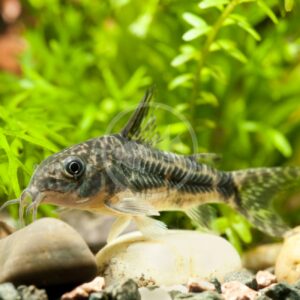
CATFISH – CORYDORAS PEPPERED
Corydoras paleatus
$6.99 – $7.99
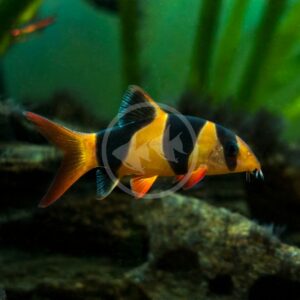
LOACH – CLOWN
Chromobotia macracanthus
$16.99 – $199.99
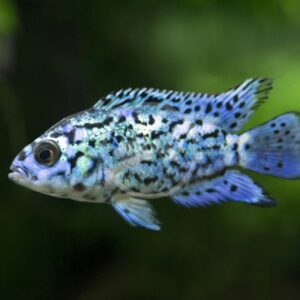
CICHLID – JACK DEMPSEY ELECTRIC BLUE
Rocio octofasciata
$19.99 – $99.99
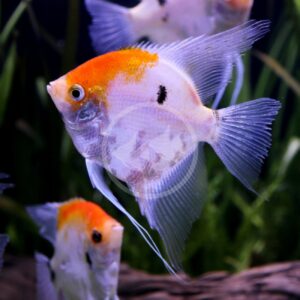
ANGELFISH – FW KOI
Pterophyllum scalare
$14.99 – $59.99
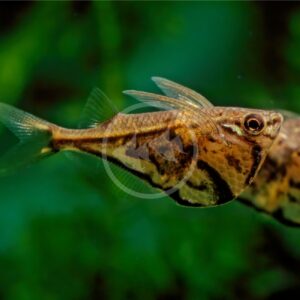
TETRA – HATCHETFISH MARBLE
Carnegiella strigata
$9.99
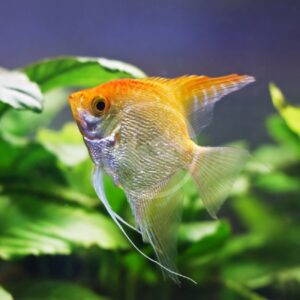
ANGELFISH – FW GOLD
Pterophyllum scalare
$9.99 – $19.99
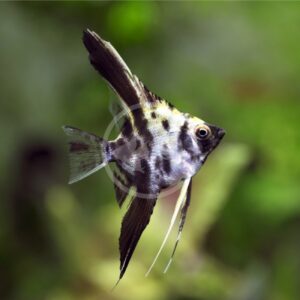
ANGELFISH – FW MARBLE
Pterophyllum scalare
$6.99 – $99.99
